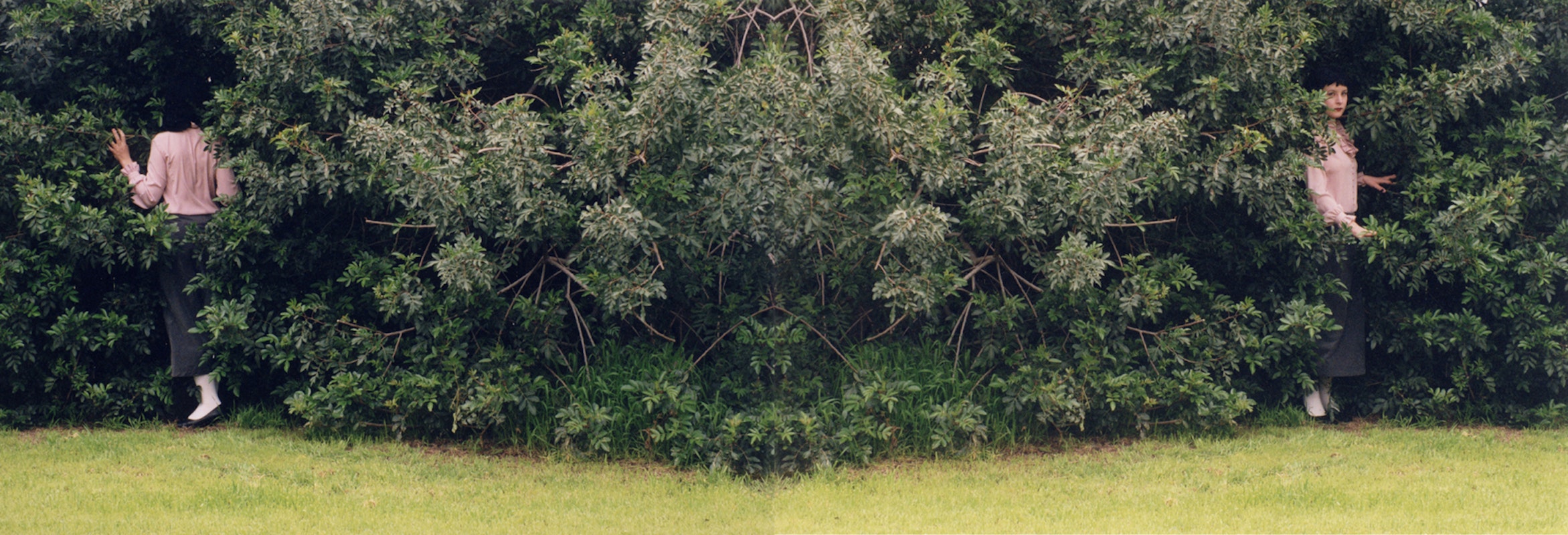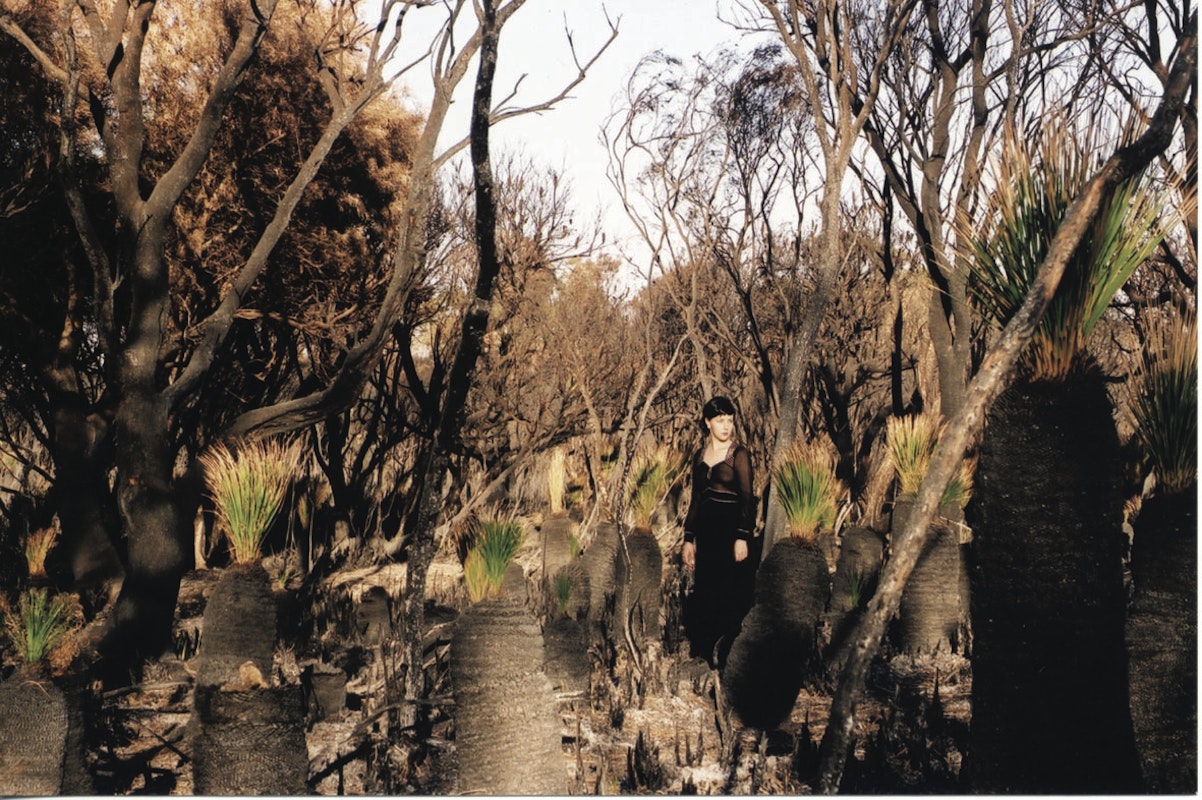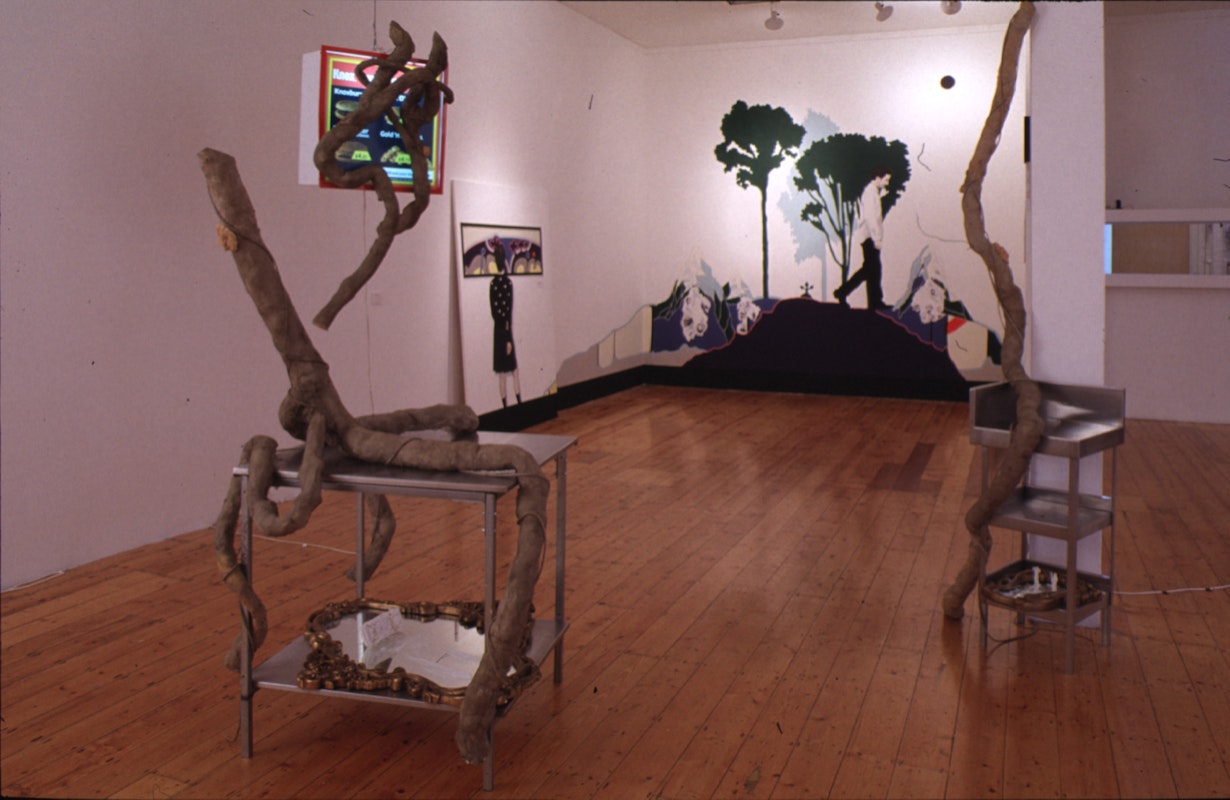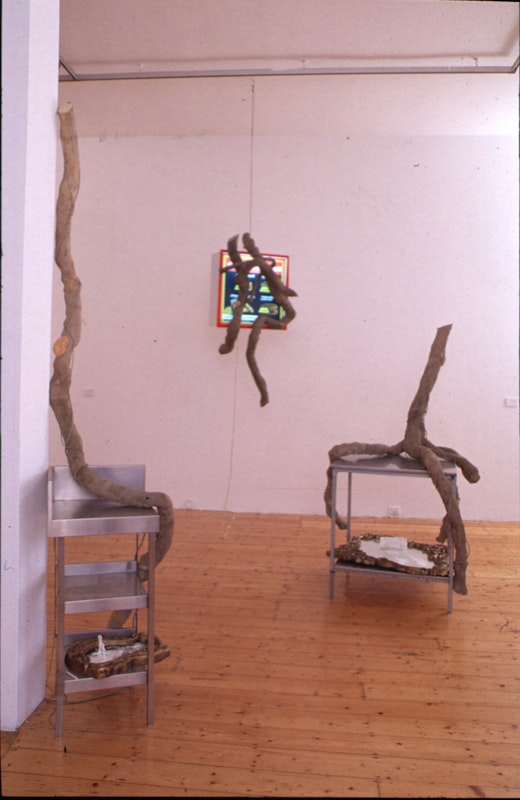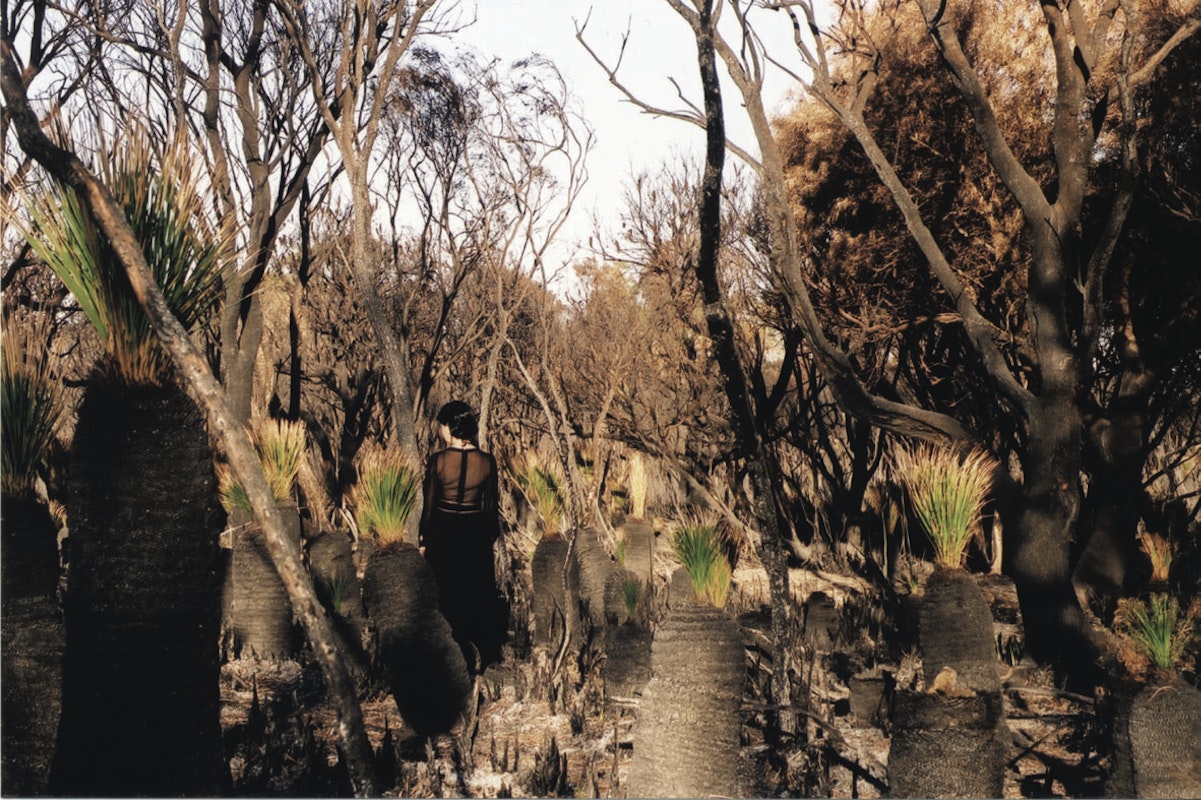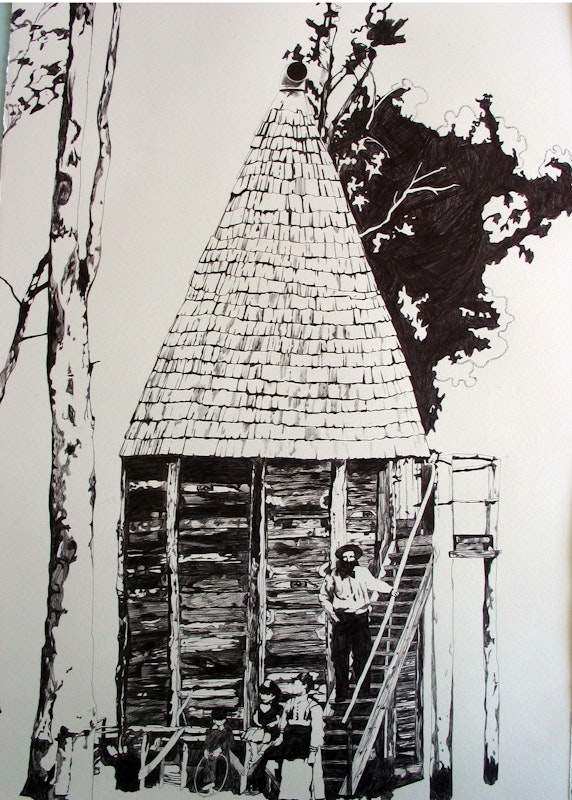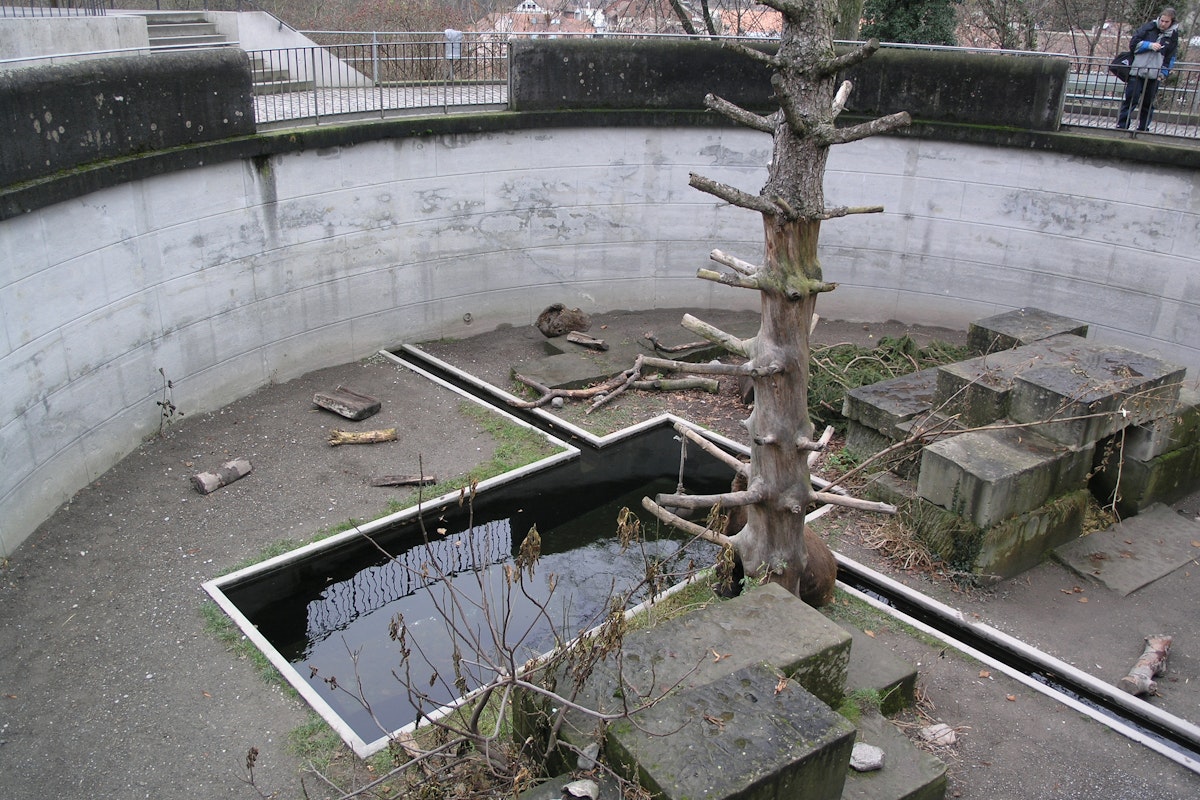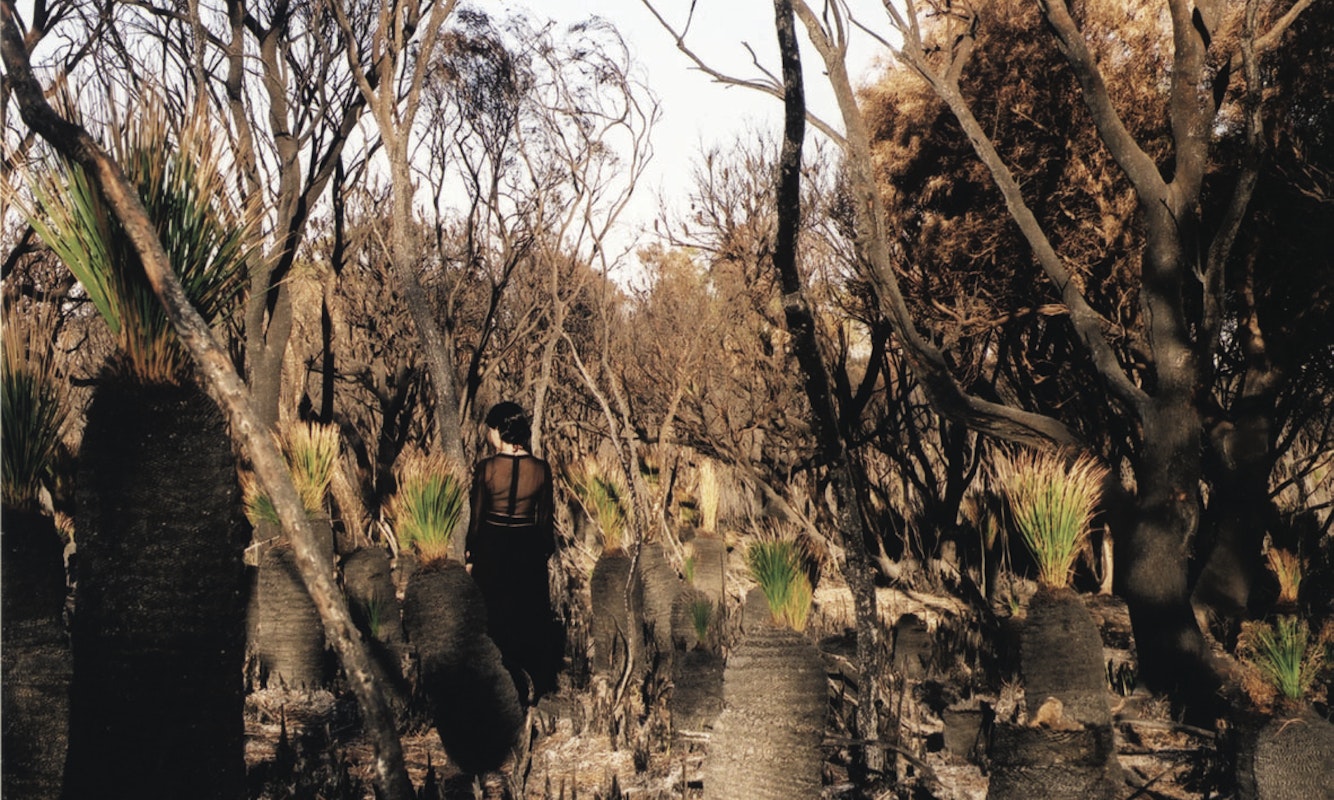
4 February -
26 February 2005
200 Gertrude Street
200 Gertrude Street, FitzroyYou must have been in strange places presented as a group exhibition examining the multi-faceted relationships between landscape and narrative. The works in the exhibition investigated the multiple layers of narrative - both fictional and non-fictional, political, fantastical, cultural and private, which weave together to inform our sense of space.
Helen Johnson's (VIC) enveloping installation/soundscape reconfigured archival imagery and representations of the Australian "bush,” by assembling them into an immersive environment which examined the ways in which notions of "wild" Australia has been produced and perpetuated, and the underlying historical/political implications of these representations.
Bec Dean's (WA) evocative juxtapositions of light boxes and text combined tense self-portraits set against gothic, seaside landscapes with lines of text from Daphne Du Marier's classic novel Rebecca. The combination of text, light and portraiture combined personal, cultural and cinematic/literary narratives, and explored the complex connections between real and imagined space.
Andrew Best's (SA) fantastical sculpture and installation work collided several layers of narrative head on, stretching our ideas of logic and linearity, and foregrounding the often contradictory processes of storytelling which (dis)orient us in a particular place and time. Having combined a suburban takeaway kitchen with the exotic canopy of a South American rainforest and a sculpturally-recreated drug fantasy, Best's installation highlighted the complexity and fragility of our contemporary sense of self and place.
Kate McMillan's (WA) work examined the simultaneous connections which particular geographic sites have with both cultural/political and personal/emotional narratives. McMillan juxtaposed large-scale photographic and video imagery of historically contentious sites sourced from around the world, invoking ideas around the precarious nature of “civilization,” and finding parallels with the fragile interior worlds of the human psyche. The works in You must have been in strange places were able to foreground our driving need to understand and apprehend our immediate environment: rather than privilege one type of narrative over the other as relevant or authoritative, the artists in the exhibition presented complex interweavings of fiction, fact, myth and metaphor, by challenging and reconfiguring our ideas of the space and time we inhabit.
